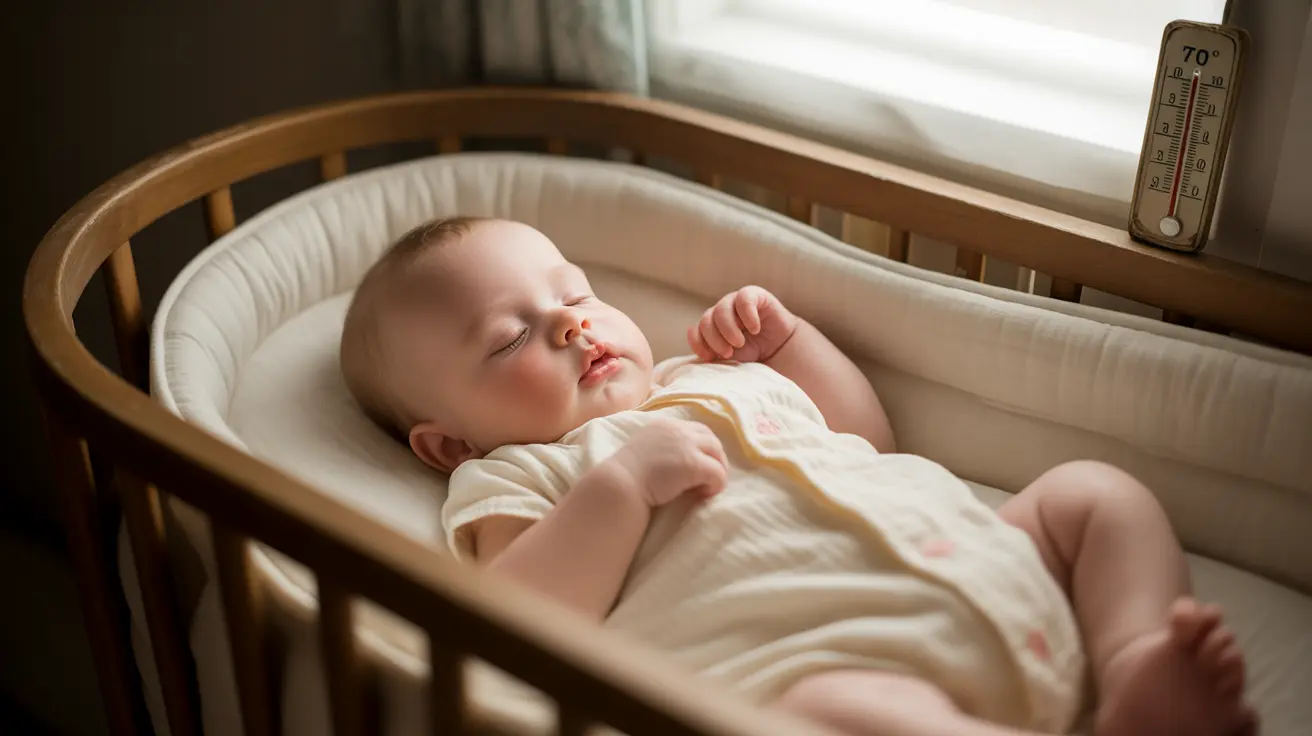Creating the perfect sleep environment for your baby is crucial for their safety and comfort. One of the most important factors to consider is maintaining the right room temperature. Understanding and maintaining the best temperature for baby sleep can help ensure your little one rests safely and peacefully through the night.
This comprehensive guide will help you understand optimal sleep temperatures for babies, how to dress your infant appropriately, and how to monitor their comfort level throughout the night. We'll also explore why temperature control is vital for reducing health risks and ensuring safe sleep practices.
Optimal Temperature Range for Baby's Room
The ideal room temperature for baby sleep typically falls between 68-72°F (20-22°C). This range helps prevent overheating while keeping your baby comfortably warm. Maintaining this temperature is essential because babies cannot regulate their body temperature as effectively as adults.
Keep in mind that factors such as humidity levels and air circulation can affect how your baby experiences the room temperature. Using a reliable room thermometer can help you maintain consistent conditions throughout the night.
Dressing Your Baby for Sleep Success
Understanding TOG Ratings
TOG (Thermal Overall Grade) ratings help determine appropriate sleep clothing based on room temperature. The higher the TOG rating, the warmer the garment. For standard room temperatures (68-72°F):
- 0.5 TOG: Light sleep sacks for warmer rooms
- 1.0 TOG: Medium-weight sleepwear for standard temperatures
- 2.5 TOG: Heavier sleep sacks for cooler rooms
Layering Guidelines
Follow these basic layering principles based on room temperature:
- Above 75°F: Short-sleeve onesie or just a diaper
- 70-75°F: Long-sleeve onesie or light sleep sack
- 65-70°F: Footed sleeper or onesie with sleep sack
- Below 65°F: Layer a onesie under a warmer sleep sack
Monitoring Your Baby's Temperature
Signs of Overheating
Watch for these indicators that your baby might be too warm:
- Sweaty neck or back
- Flushed cheeks
- Rapid breathing
- Warm to touch
- Restlessness or irritability
Signs of Being Too Cold
Look for these signs that your baby needs more warmth:
- Cold hands and feet
- Pale or blotchy skin
- Shivering
- Lethargy
- Poor feeding
Temperature Control and SIDS Prevention
Maintaining appropriate room temperature is a crucial factor in reducing the risk of Sudden Infant Death Syndrome (SIDS). Overheating has been identified as a risk factor, making it essential to keep your baby's sleep environment at a safe temperature.
Always place your baby on their back to sleep and ensure the room is well-ventilated. Avoid using loose blankets or heavy bedding that could lead to overheating.
Frequently Asked Questions
What is the best room temperature range for a baby to sleep safely and comfortably?
The optimal room temperature for baby sleep is between 68-72°F (20-22°C). This range helps prevent overheating while keeping your baby comfortable throughout the night.
How should I dress my baby for sleep depending on the room temperature?
For standard room temperatures (68-72°F), dress your baby in a long-sleeve onesie with a 1.0 TOG sleep sack. Adjust clothing based on temperature: lighter clothing for warmer rooms and additional layers for cooler rooms.
What are the signs that my baby is too hot or too cold while sleeping?
Signs of overheating include sweating, flushed cheeks, and rapid breathing. Signs of being too cold include cold extremities, pale skin, and shivering. The neck is the best place to check your baby's temperature.
Why is maintaining the right sleep temperature important to reduce the risk of sudden infant death syndrome (SIDS)?
Overheating is a known risk factor for SIDS. Maintaining proper room temperature helps regulate your baby's body temperature and creates a safer sleep environment, reducing SIDS risk.
How can I accurately monitor and adjust my baby's room temperature for safe sleep?
Use a reliable room thermometer to monitor temperature consistently. Ensure good air circulation, adjust heating/cooling as needed, and regularly check your baby's comfort level by feeling their neck or back.




